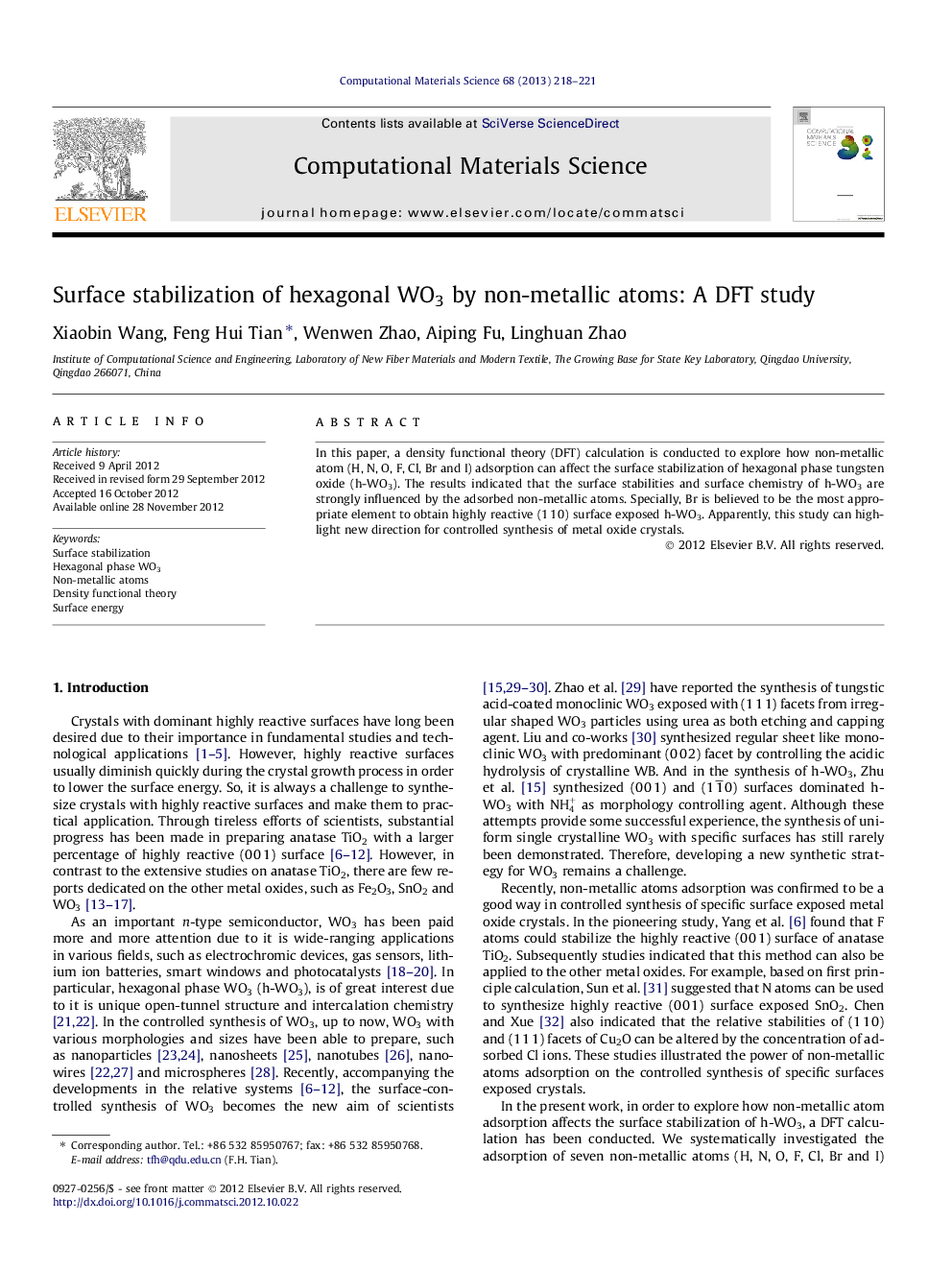| Article ID | Journal | Published Year | Pages | File Type |
|---|---|---|---|---|
| 1561345 | Computational Materials Science | 2013 | 4 Pages |
In this paper, a density functional theory (DFT) calculation is conducted to explore how non-metallic atom (H, N, O, F, Cl, Br and I) adsorption can affect the surface stabilization of hexagonal phase tungsten oxide (h-WO3). The results indicated that the surface stabilities and surface chemistry of h-WO3 are strongly influenced by the adsorbed non-metallic atoms. Specially, Br is believed to be the most appropriate element to obtain highly reactive (1 1 0) surface exposed h-WO3. Apparently, this study can highlight new direction for controlled synthesis of metal oxide crystals.
Graphical abstractThe surface stabilities of h-WO3 can be modified by non-metallic atoms.Specially, Br can not only reduce the surface energy of h-WO3, but also result in the highly reactive (1 1 0) surface more stable than (0 1 0) and (0 0 1) surfaces.So, W–Br compounds or hydrobromic acid (HBr) can be chosen as the precursor or the morphology controlling agent to synthesize large-scaled highly reactive (1 1 0) surface exposed h-WO3Figure optionsDownload full-size imageDownload as PowerPoint slideHighlights► We reveal the effects of non-metallic atom adsorption on the surface stabilities of h-WO3. ► The adsorption of non-metallic atoms can strongly influence the surface stabilities and surface chemistry of h-WO3. ► Br is believed to be the most appropriate element to obtain highly reactive (1 1 0) surface exposed h-WO3.
